2013
If you contribute to a 401(k) or other workplace retirement account, the balance you've built up is a tempting source of readily available cash. You can borrow from your account with favorable repayment terms. Under certain circumstances you can qualify for a hardship withdrawal. And when you switch jobs you can simply cash out your entire account, putting all that money in your pocket.
You could do all of the above, and plenty of people are. In 2010, according to financial services company HelloWallet, 26% of people tapped into their workplace account before retirement, to the tune of $70 billion. (The study looked at defined contribution plans -- primarily 401(k)s and 403(b) plans[1] , the latter of which are used by nonprofits.)
If you join the herd, though, be prepared for short term-consequences - a complicated array of tax penalties, fees, and other charges - and long-term damage to your savings.
As the U.S. Government Accountability Office said in a 2009 report, "The 'leakage' from 401(k) accounts can result in a permanent loss of retirement savings."
The upshot is that too many employees are pecking away at what should be a protected species: workplace retirement accounts.
"The reality is that defined contribution savings plans are not used solely to fund retirement; for many, they serve as an all-purpose savings vehicle,"Brigitte Madrian, a Harvard University professor, recently told the U.S. Senate Committee on Health, Education, Labor and Pensions.
Cash-outs, hardship withdrawals, loans - they all have the potential to damage your retirement savings. The growth of a retirement plan or any long-term investment depends on regular saving, investment returns, and the mighty power of compounding.
Compounding is when your investment earnings are added to your principal, forming a larger base on which earnings can accumulate. After all, earning 6% on a base of $10,000 is a far better situation than earning the same rate of return on $1,000.
Cashing out means you've moved your 401(k) money from the protected world of tax-deferred savings, and that comes with a high cost. The distributions from cash-out are charged a 10% tax penalty, capital gains taxes, and possible income taxes.
Despite the penalties, cash-outs are by far the largest source of withdrawals, according to private-company and government studies. HelloWallet says 19% of plan participants have at some point taken a full distribution from one or more of their accounts.
The research suggests that cash-outs and hardship withdrawals from workplace retirement accounts are driven by households' lack of emergency savings. Households that don't have available cash to pay for at least three months of living expenses are much more likely to raid their 401(k) plans.
Borrowing from 401(k) plans has increased since the 2008 financial crisis, according to a 2011 study by consultancy Aon Hewitt. The company also estimates that half of participants who took hardship withdrawals did so because of eviction. Medical bills were the second most reported reason, at 12.6%.
Defined contribution plans generally allow employees to borrow up to half of their vested account balance, up to $50,000. Loans are typically made at low interest rates and borrowers have up to five years to repay.
Pitfalls abound, however. Money you borrow is removed from your account, so it isn't growing tax-deferred in the defined contribution plan. Depending on your financial circumstances, repaying the loan could strain your budget. You might not be able to make loan payments and continue to contribute to the account.
There are other factors that only an accountant could love, or figure out. If you leave your job you might have to immediately repay the loan. If you can't, the balance could be taxed as if you took a distribution and be subject to a 10% penalty. If you default on the loan, the "leakage"from your 401(k) becomes permanent.
Are there solutions? Here are a few of the ideas floating around in the world of defined contribution plans:
- Rolling over money from one workplace 401(k) to another could be simpler, which might encourage workers to move their assets to another defined contribution plan instead of cashing out.
- Employers could encourage workers to contribute more to their defined contribution plan, in part to offset the inevitable withdrawal of assets. Companies could also do more to educate employees on how important it is to keep retirement assets in retirement accounts.
- Employers could impose additional restrictions on borrowing and hardship withdrawals. Aon Hewitt notes that higher loan fees discourage borrowing. So would limiting the number of loans to one; the company says that nearly one-third of borrowers have multiple loans.
- Building up an emergency savings account would help, but that's easier said than done for many families.
The bottom line is that saving for retirement is tough. Don't make it tougher by letting the money you need for a secure retirement leave your account, at least not without taking into account all the consequences.
[1] The amount accrued in a defined contribution (DC) plan depends on an employee's investment choices, the amount he or she saves, and the rate of return on investments - in other words, the burden is on the employee, who may or may not feel qualified to make such important investment decisions. In a defined benefit (DB) plan such as a pension, a company invests the pension assets and pays a retirement annuity that is typically based on a formula involving years of service and the employee's salary.?
